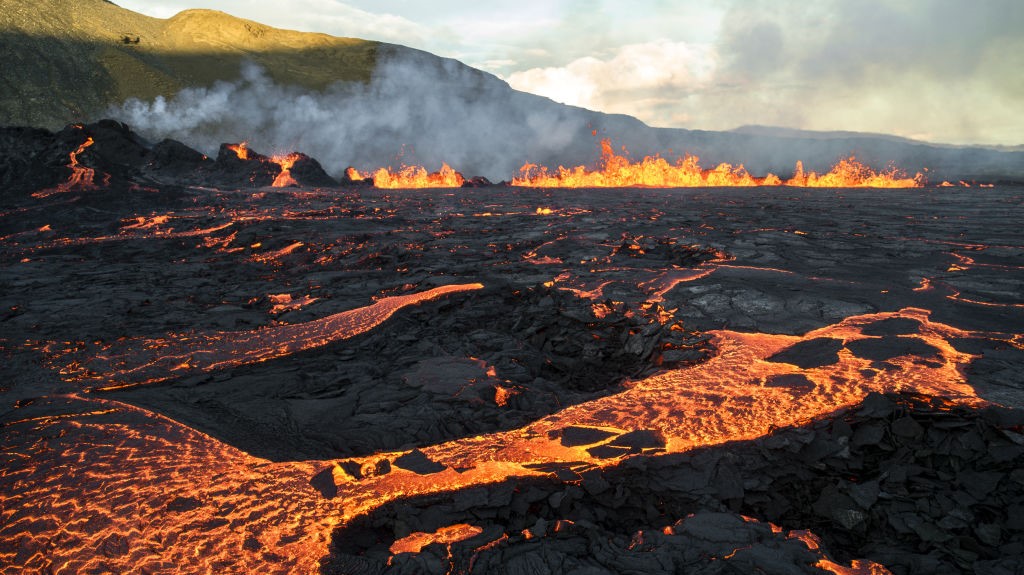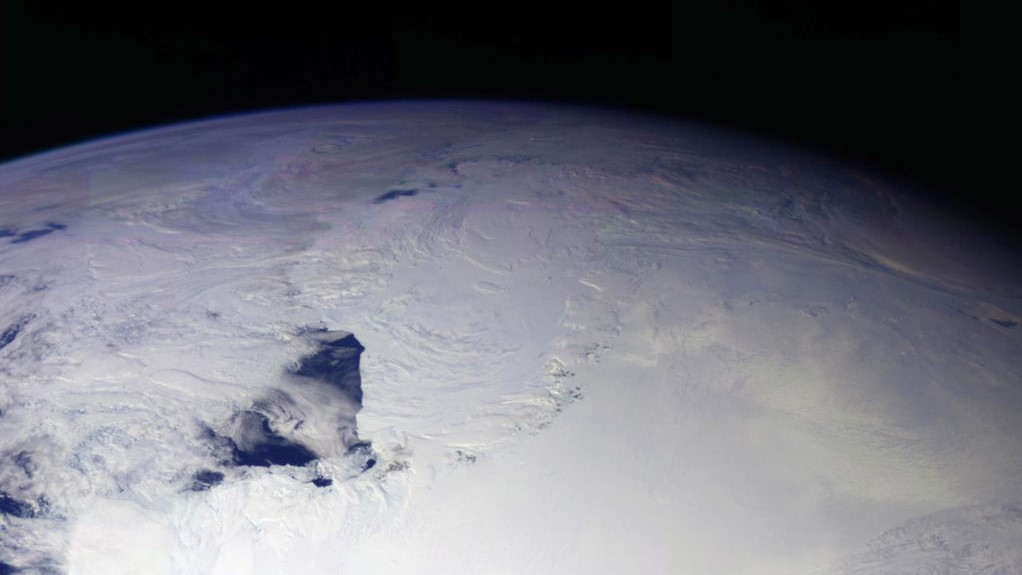Lava outburst 3 times the size of Texas may have triggered Snowball Earth 717 million years ago
Massive eruptions 719 million years ago in what is now Canada may have sucked enough CO2 from the atmosphere to freeze Earth over 2 million years later.
Devastating volcanic eruptions may have been so enormous they turned the planet into "Snowball Earth" 717 million years ago, a study has found.
The volcanic outburst — one of the largest in Earth's history — likely triggered a series of chemical reactions that sucked carbon dioxide (CO2) from Earth's ancient atmosphere.
The massive eruptions, which occurred in what is now northern Canada, spewed cascades of lava that hardened into a volcanic highland covering 860,000 square miles (2.23 million square kilometers) — an area three times the size of Texas. Acidic rain then pelted these fresh rocks, producing a chemical reaction that may have enveloped the planet in ice for 57 million years.
Researchers already suspected that volcanic activity may have caused this glaciation episode, known as the Sturtian glaciation. But they were unsure exactly how the outburst caused the onset of Snowball Earth.
"Nothing can be understood in isolation," Galen Pippa Halverson, a professor of geology at McGill University in Canada and co-author of the new study, told Science.
Related: World's oldest glacier dates to 2.9 billion years ago, research finds
There are two main ways that volcanic eruptions can cool the planet down, according to the study published 27 June in the journal Earth and Planetary Science Letters. Outbursts release gasses containing sulfur-rich particles that become suspended in the atmosphere and block sunlight, resulting in cooling. Eruptions may also alter the climate via a chemical reaction known as weathering, which lava rocks are particularly susceptible to.
Get the world’s most fascinating discoveries delivered straight to your inbox.
Weathering occurs when rainwater — which is slightly acidic due to dissolved carbon dioxide (CO2) — reacts with the minerals in rocks to form clays and soluble salts. In forming these new minerals, CO2 is sucked out of the atmosphere and trapped in sediments that eventually wash into the ocean. The removal of CO2, a greenhouse gas, leads to global cooling.
To understand which mechanism triggered the Sturtian glaciation, the team needed to home in on exactly when the volcanic outburst took place. Sulfur particles stay suspended in the atmosphere for months to years, whereas rock weathering takes 1 million to 2 million years to spark a global cooling effect.
Halverson and her colleagues analyzed tiny crystals in the rocks coughed up by volcanoes in the area, which is known as the Franklin large igneous province (LIP). They measured the ratios of uranium and lead in these crystals and calculated their age based on the rate of decay. The team also dated rocks that had been scoured by glaciers as Earth froze over.
Their analysis suggests the volcanic outburst took place 1 million to 2 million years before the glaciation, pointing to chemical weathering as the primary cause of Earth's cooling. Another study, published in November 2022 in the journal Science Advances, came to the same conclusion.
Rock weathering elsewhere on the globe may have contributed to the Franklin LIP's cooling effect. The eruptions and subsequent glaciation occurred at a time when Earth's continents formed one giant landmass around the equator — the ancient supercontinent Rodinia. This tropical landmass was frequently battered with rain, resulting in additional weathering and CO2 entrapment.
But some experts remain skeptical. Paul Hoffman, an emeritus professor of geology at Harvard University who co-authored the 2022 study, said the timing of the Sturtian glaciation is still debated and may not match the newly pinpointed timing of the Franklin LIP. Ice-scoured rocks that represent the start of Snowball Earth may have formed much later than currently thought, because the erosion indicates that thick ice was flowing at sea level — a process likely to have begun several hundred thousand years after the oceans froze over, Hoffman told Science.

Sascha is a U.K.-based staff writer at Live Science. She holds a bachelor’s degree in biology from the University of Southampton in England and a master’s degree in science communication from Imperial College London. Her work has appeared in The Guardian and the health website Zoe. Besides writing, she enjoys playing tennis, bread-making and browsing second-hand shops for hidden gems.
 Live Science Plus
Live Science Plus







